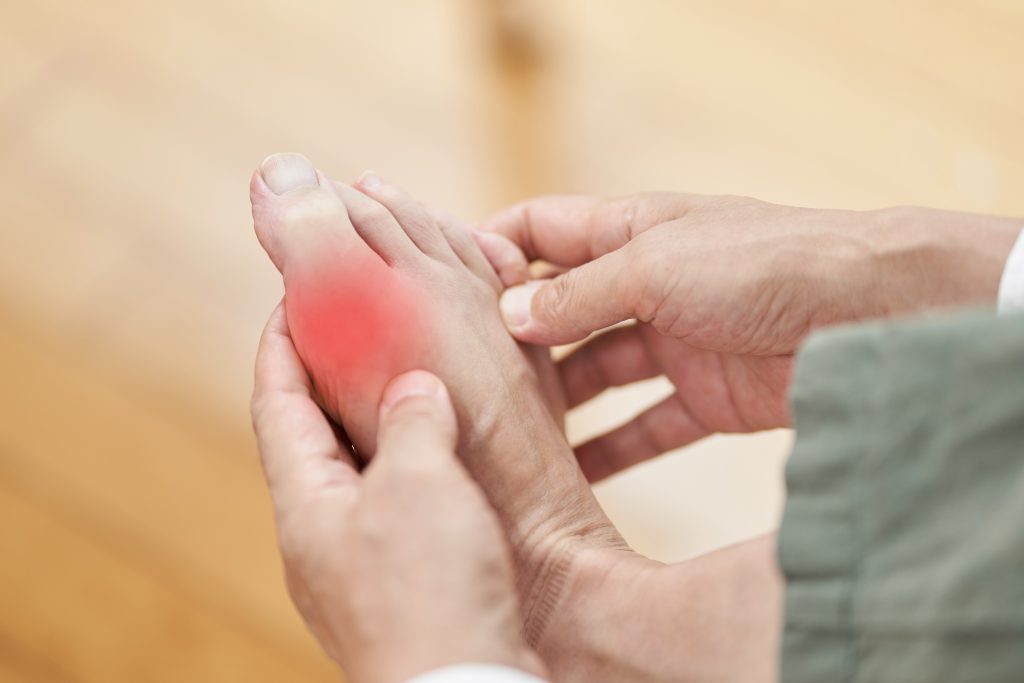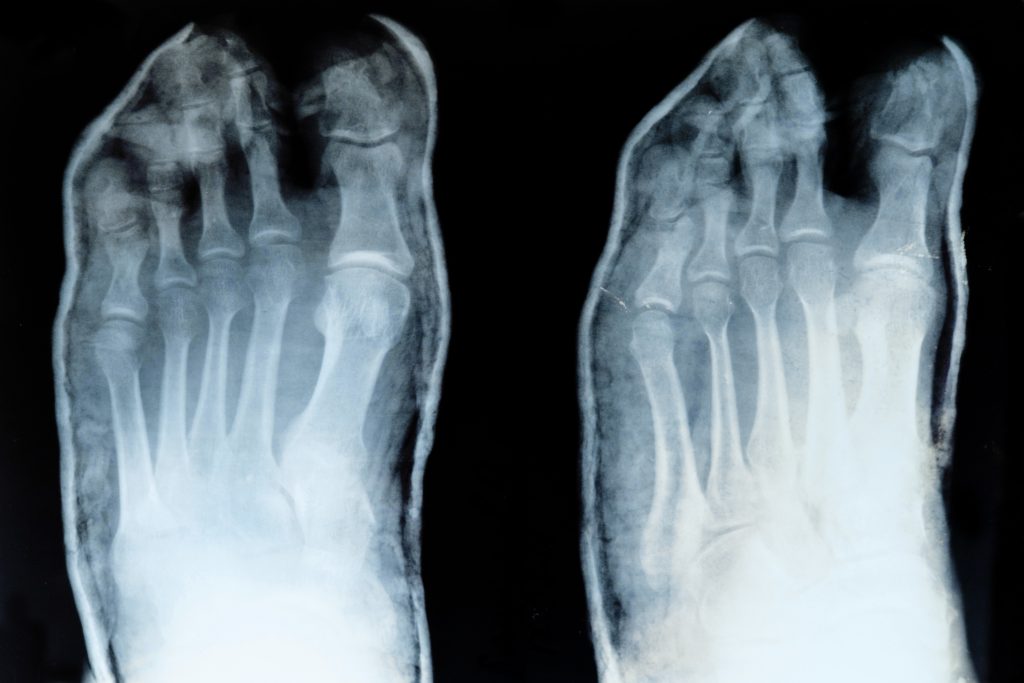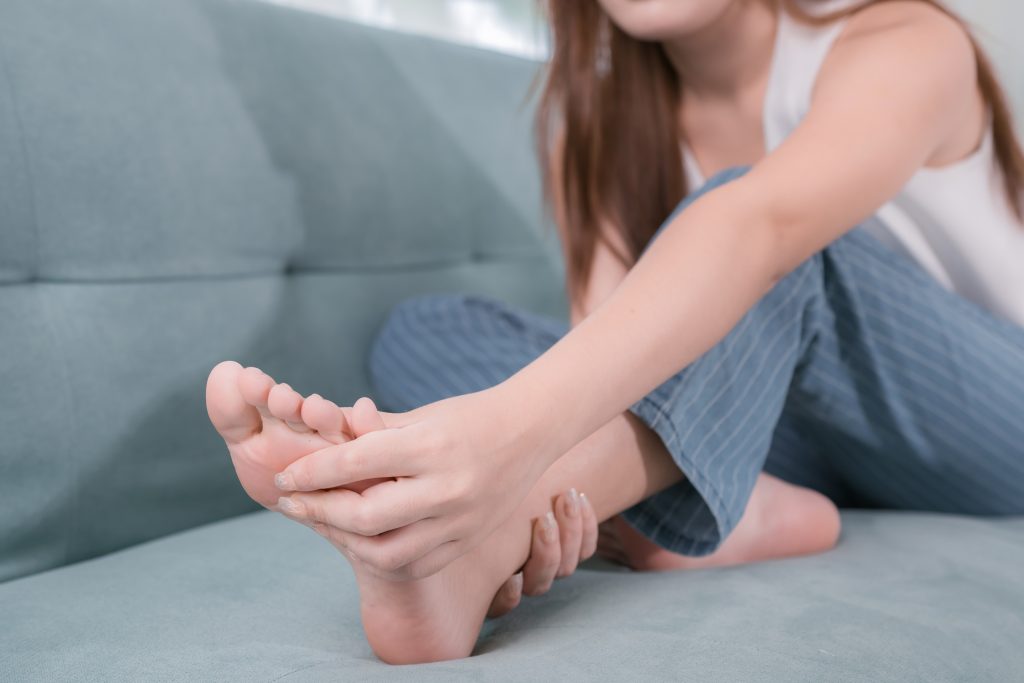Toe Joint Replacement and Life Beyond Pain
Toe joint replacement, also known as toe arthroplasty, is a surgical method used to eliminate a damaged toe joint and substitute it with an artificial joint. This procedure is commonly conducted on the big toe and is effective in alleviating pain and improving mobility in toes that have been impaired due to injury, arthritis, or other ailments.

What are the reasons for replacing the joint of the big toe?
Generally, individuals suffering from rheumatoid arthritis or osteoarthritis require a big toe replacement. Specifically, the primary cause of arthritis in the foot highly involves the base of the MTP joint. Frequently, bone spurs form on the joint of the big toe due to the constant friction of the bones. As a result, the big toe becomes rigid, a condition known as “hallux rigidus.”
Symptoms & Causes
Symptoms of big toe arthritis
Arthritis in the big toe leads to discomfort in the joint, especially when initiating walking movements. The joint might swell and experience limited mobility, potentially forming a bump similar to a bunion or bony spurs at its upper part. This could cause friction with footwear and result in irritation. Over time, as the condition worsens, the big toe may become more distorted and cause increased pain.
Causes of big toe arthritis
The specific reasons behind big toe arthritis are not fully known, but it is associated with the joint experiencing excessive wear and tear. This could be due to genetic factors, abnormalities in the foot’s structure, or prior injury to the big toe. Whenever you walk, your big toe joint bears the entire weight of your body, which can lead to the erosion of cartilage within the joint.

What is the contrast between toe joint replacement and fusion?
Joint fusion, or arthrodesis, is a surgical procedure that permanently joins the bones of a joint. This surgery is beneficial in providing joint stability and alleviating pain. However, unlike toe replacement surgery, joint fusion restricts any movement in the joint. Toe replacement surgery allows for some mobility with the artificial joint, although the success rates can vary among individuals. Additionally, not everyone is suitable for a complete joint replacement.
What happens during toe joint replacement?
Typically, toe joint replacement is performed while the patient is under the effects of general anesthesia. The majority of patients are discharged from the hospital the day after the surgical procedure.
The surgeon will create a small opening close to the joint of your big toe. They will assess the existing damage in the joint and remove any bony growths, making it smooth. They will then use either metal or plastic components to replace either part or the entire joint of your toe. The decision regarding which type of prosthesis to use and the extent of the surgery will be based on your individual circumstances. It is important to have a conversation with your consultant about all the possible choices available.
Your cut will be sealed with either stitches or staples. A bandage will be placed over your foot. We will assist you in starting to walk the day after your operation using crutches. You will be provided with a special shoe that will allow you to avoid putting too much pressure on your new toe joint. A physiotherapist will come to see you and demonstrate exercises that will improve your range of motion.
Toe Joint Replacement Surgery Recovery

The medical staff will keep an eye on you after the surgery to make sure that you do not experience any negative reactions or issues from the anesthesia. You will remain in the recovery area until you can safely walk with the assistance of a walker, cane, or crutches. Additionally, you will receive instructions on how to properly care for your toe at home.
- Applying ice to the toe to alleviate pain and decrease swelling.
- Elevating the foot as much as possible
- It is advisable to wear shoes with hard soles frequently.
- Coming back to get stitches removed and have the surgical site examined.
What steps should I follow to ensure proper self-care after undergoing toe joint replacement surgery?
There are certain strategies that can assist in a faster and safer recovery process.
- Arrange for someone to help you at home.
- Make sure you eliminate any objects or items that may cause someone to trip in your home, such as rugs and cords.
- Utilize supportive tools such as a walking aid, mobility device, shower seat, and handrails to alleviate pressure from your toe.
Risks and Complications
Risks associated with cheilectomy are:
- Infection
- Swelling
- Slow wound healing
- Nerve damage
- Deep vein thrombosis
Approximately 80% of individuals who have undergone cheilectomy have reported it as both effective and secure.
Treatment in Türkiye:
The medical staff of surgical teams, doctors, and consultants at REHABTÜRK can provide the best treatment options and free consultations, striving to stay up-to-date on the latest medical technologies and methods.

